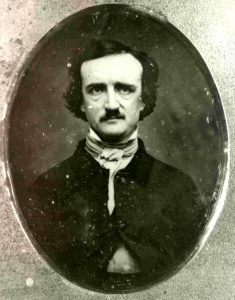
As a preeminent American literary figure, Edgar Allan Poe is widely known for his tales of horror and the macabre. Less well known about Poe is his place in literary history as inventor of detective fiction, his contributions to the emergence of science fiction, and as editor of a textbook on conchology (The conchologist’s first book). It is through his work as science fiction writer that Poe found his way into Fantastic Worlds: Science and Fiction 1780-1910, a Smithsonian Libraries’ exhibition, now on display at the National Museum of American History in the Smithsonian Libraries gallery space located in One West.

